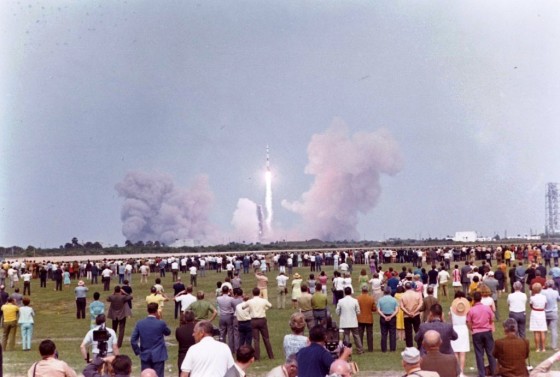The Space Race demonstrated that the United States and Soviet Union could partake in peaceful competition and cooperation
From Sputnik to the lunar landings, the Space Race represented one of the more electrifying aspects of the Cold War: the United States and the Soviet Union battling for dominance of the moon and stars. On July 21, 1969, the Space Race reached its historic zenith as Neil Armstrong set foot on the moon and delivered his famous remarks. Days later, President Nixon greeted the three astronauts shortly after splashdown in the Pacific Ocean. Welcoming them back to Earth, President Nixon emphasized that “as a result of what you have done, the world has never been closer together before.”

President Nixon understood that the pursuit of scientific innovation and exploration tended to eclipse larger geopolitical conflicts. Breakthroughs in science, technology, and medicine are not restricted by national boundaries, and in the Summer of 1969, the world celebrated the achievements of three American astronauts and the NASA engineers who made it all possible.
The Space Race was not destined to be a clash of rival superpowers from the beginning. Rather, throughout the Space Race the U.S. sought to cooperate with the Soviet Union. In 1959, NASA offered to help the Soviet Academy of Sciences track manned space flights. In 1962, President Kennedy proposed joint Soviet-American exploration of the moon, an offer President Johnson later reiterated. During his time as President, Johnson consistently recommended exchanges of scientific information, and he even encouraged NASA to invite Soviet representatives to the launch of Gemini VI.
The Soviets typically rejected American proposals for cooperation in part because the Soviet Academy of Sciences, and consequently, their space program, was directly linked to the military. Despite Soviet snubs, President Nixon decided to continue the trend of encouraging space cooperation. A report compiled by the Nixon Administration in 1970 reflects the reasoning for his decision:
“Cooperation with the Soviet Union in space matters is desirable. Such cooperation, if it involved substantive scientific and technical content, could be useful intrinsically as well as from the viewpoint of raising the level of political confidence between ourselves and the Soviets and of easing international tensions.”
Possibilities for cooperation existed in terms of unmanned space research, manned flight, bilateral exchanges of information and experts, and coordinated work regarding the practical applications of space technology. Furthermore, Nixon, like Kennedy and Johnson before him, believed that cooperation in space between the United States and the Soviet Union held the potential for improving the state of relations between the two competitors.

Astronaut Donald K. “Deke” Slayton embraces cosmonaut Aleksey Leonov in the Soyuz spacecraft. Credits: NASA
American astronauts and Soviet cosmonauts would not meet in space until 1975. The Apollo-Soyuz Test Project was the first joint space flight between the leaders in space exploration, symbolizing the end of the Space Race, and the era of détente.

